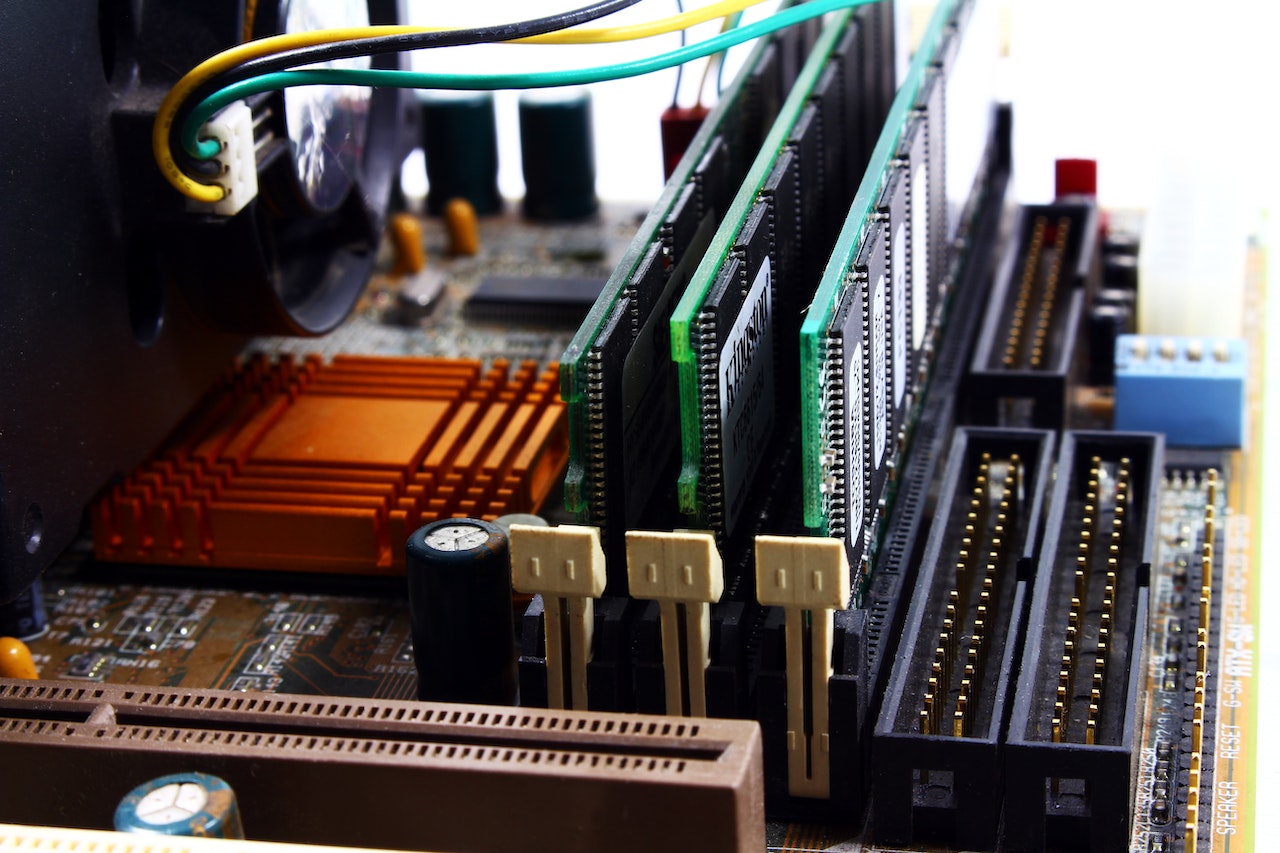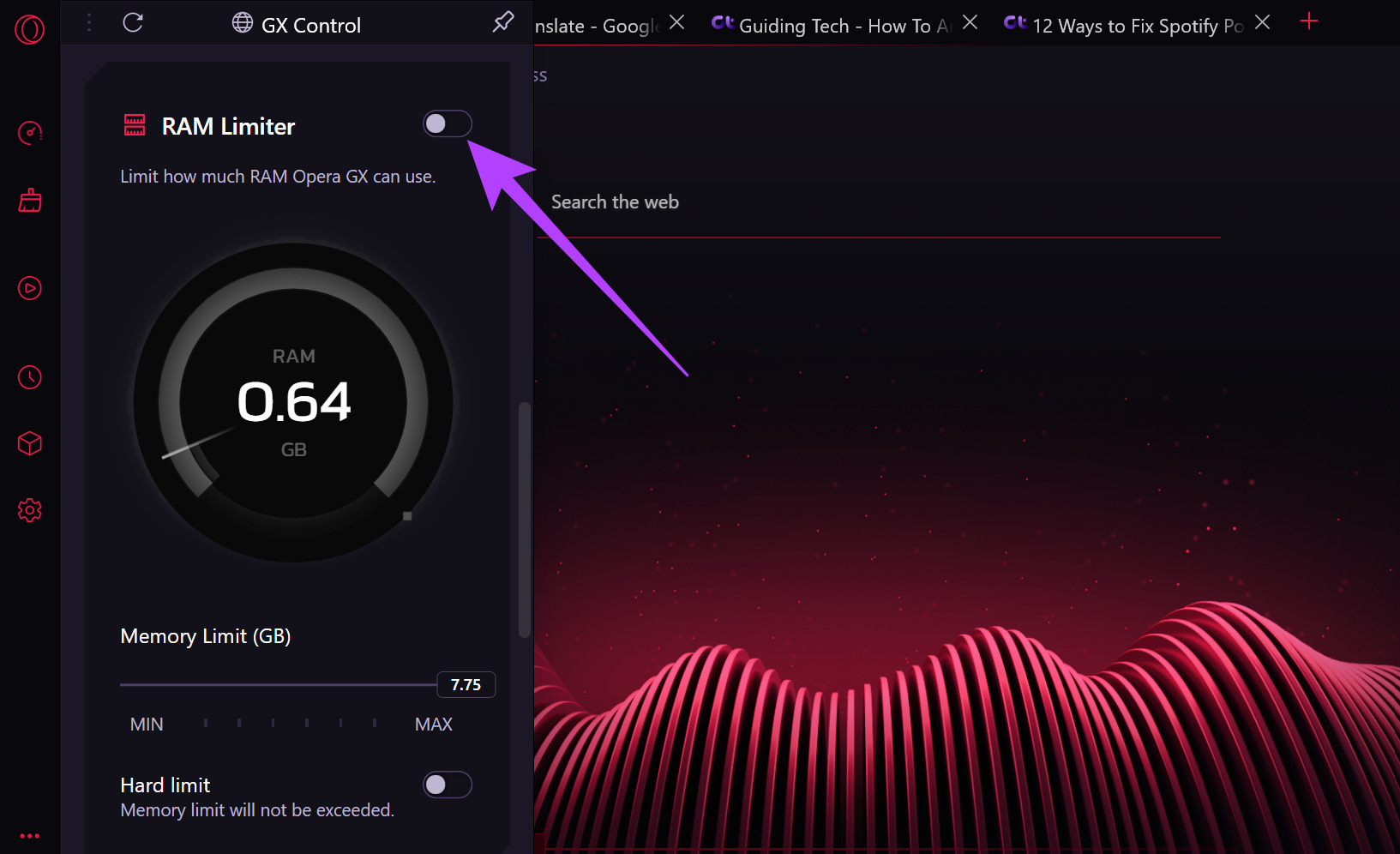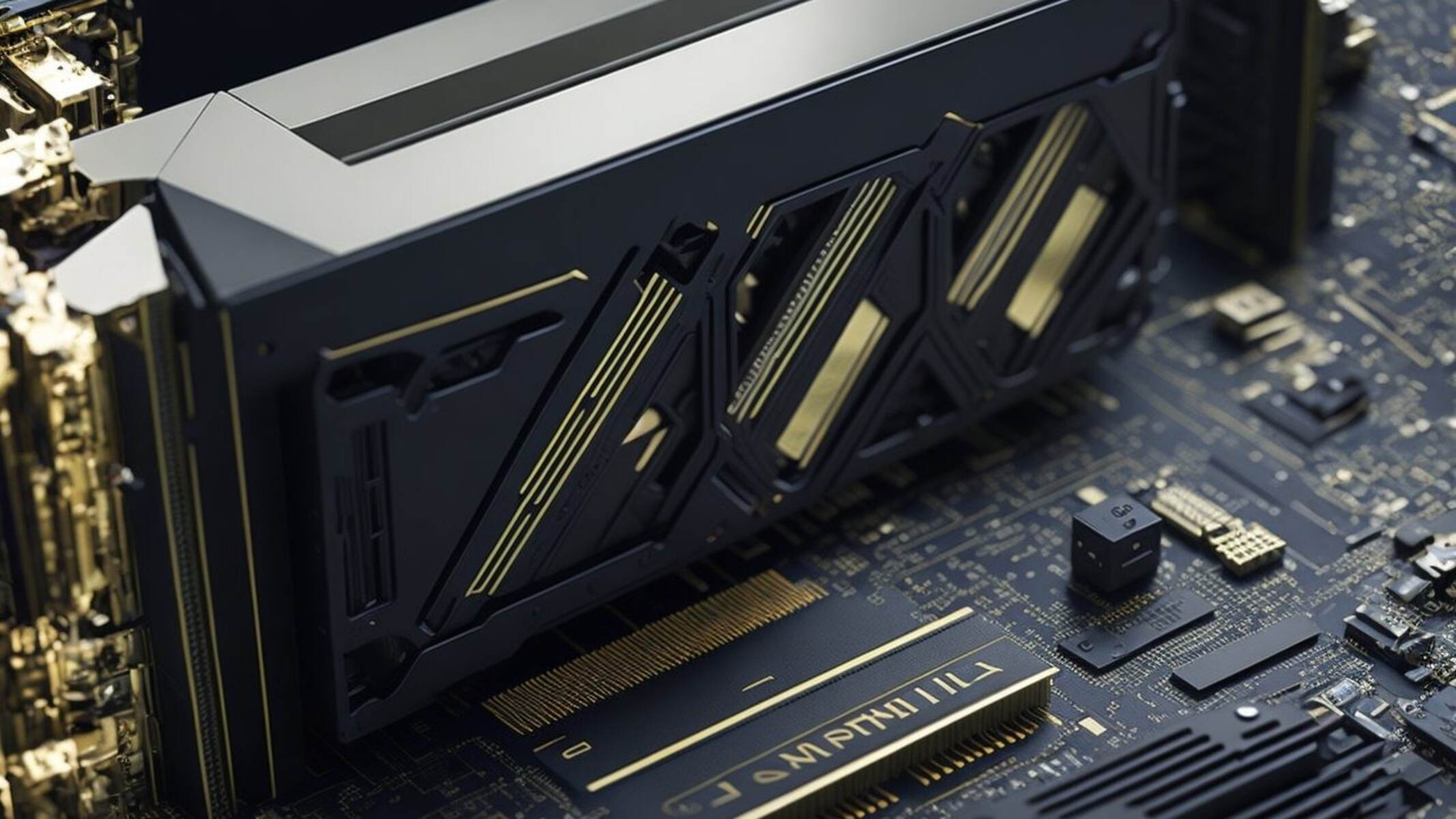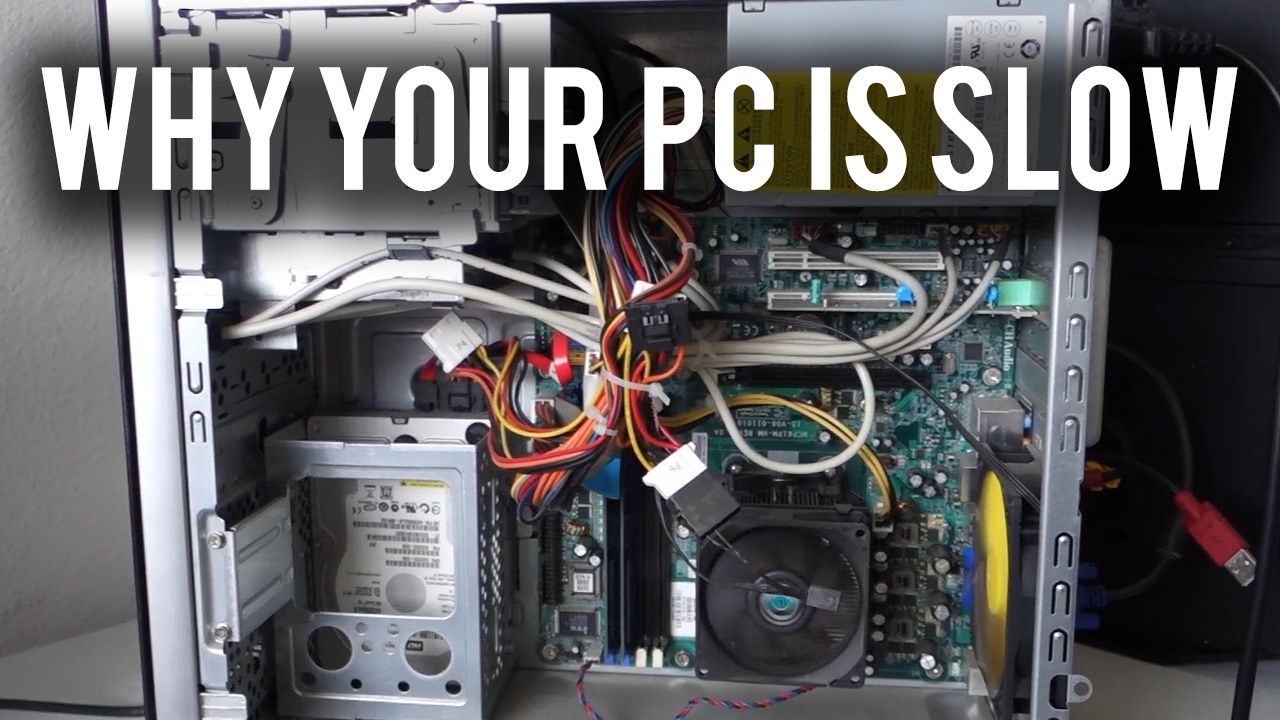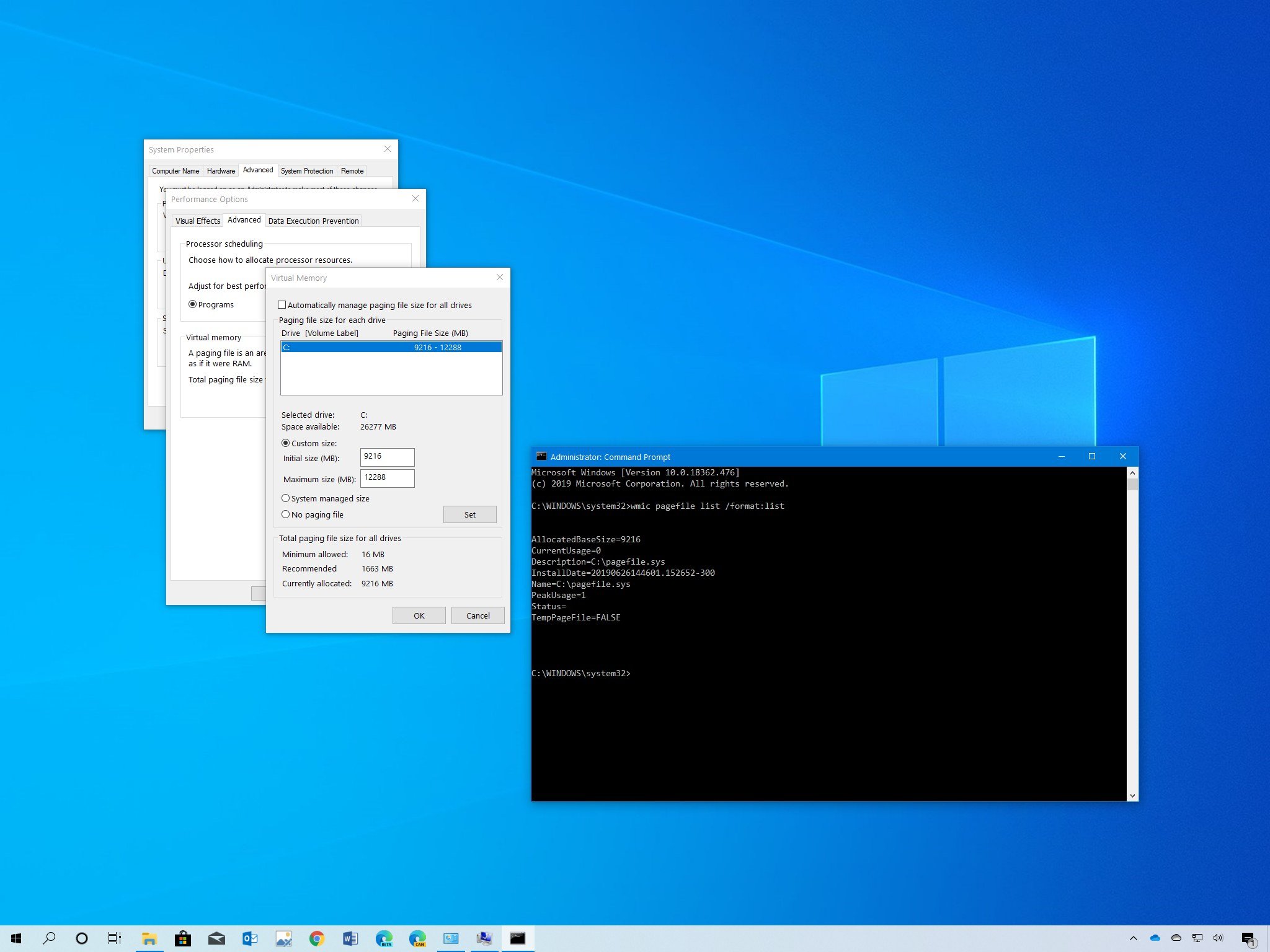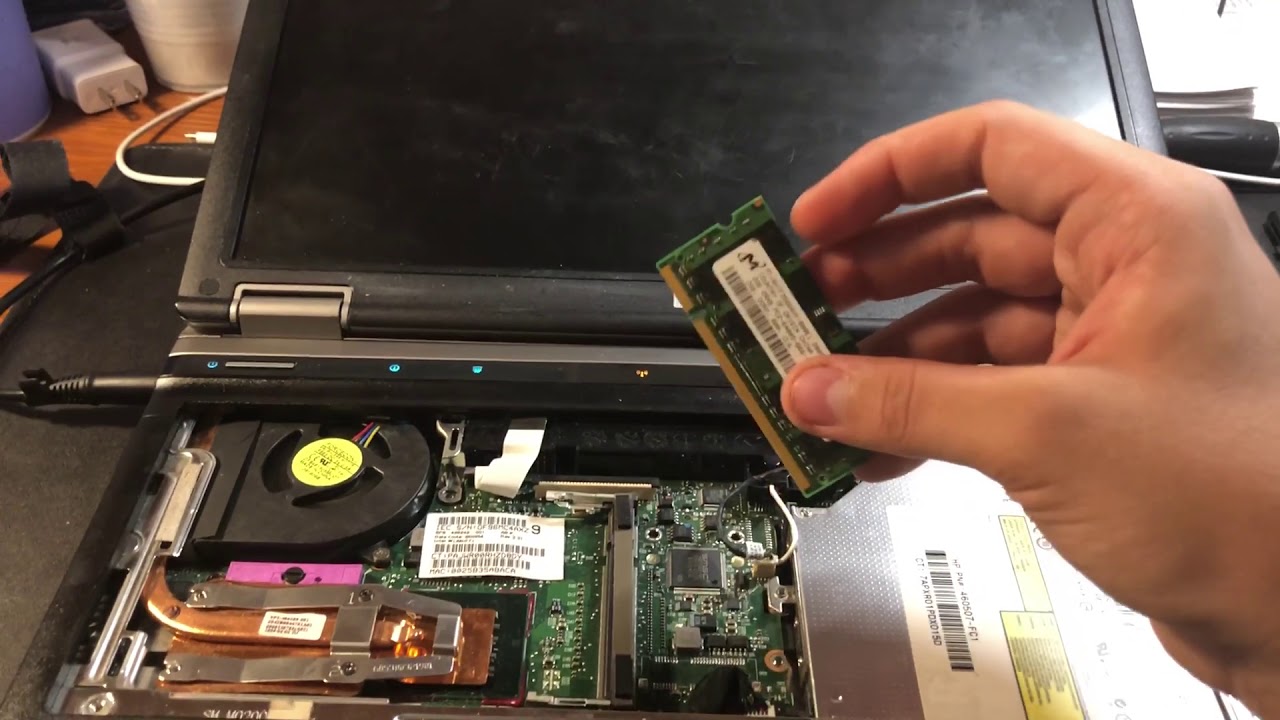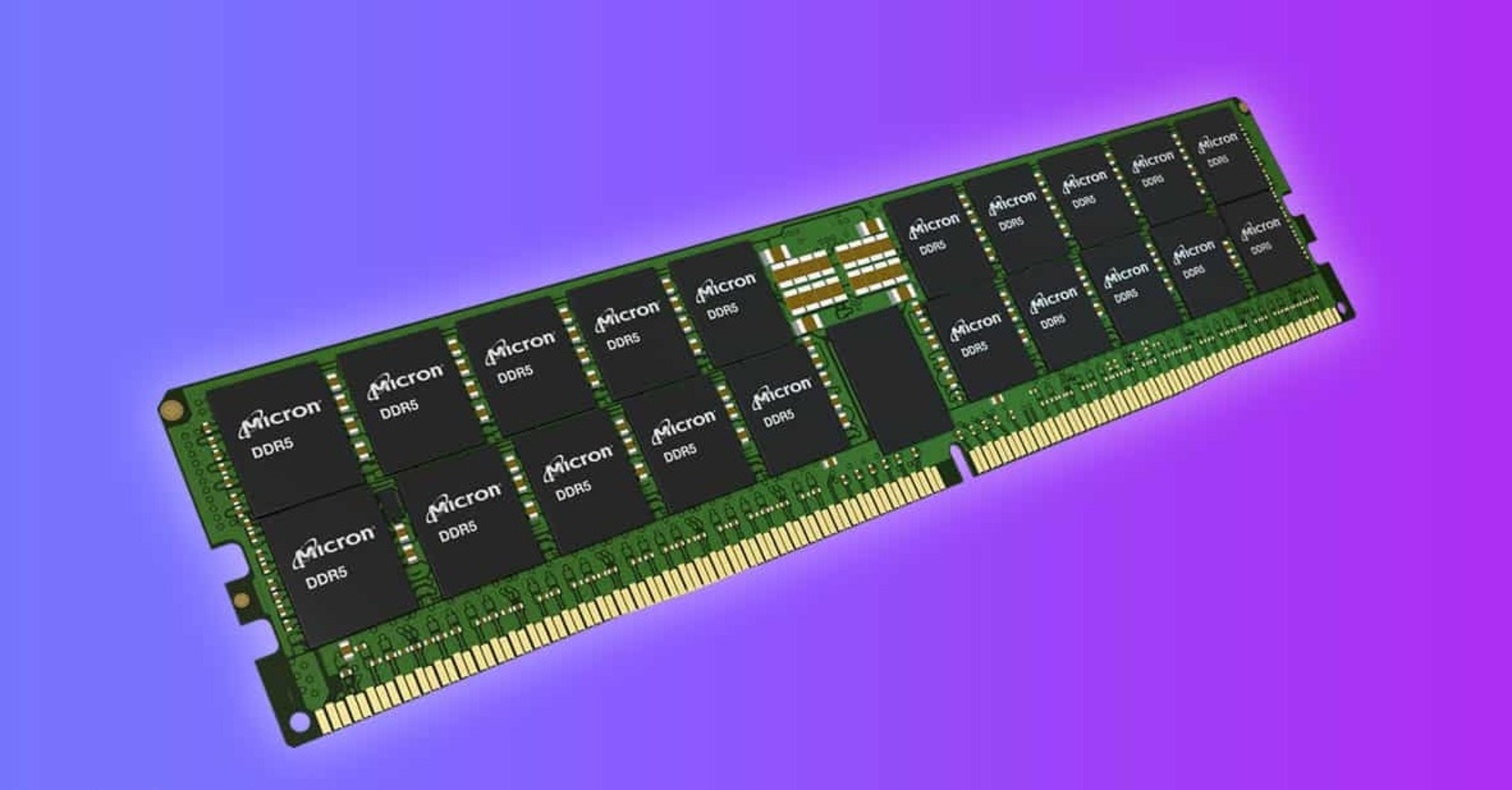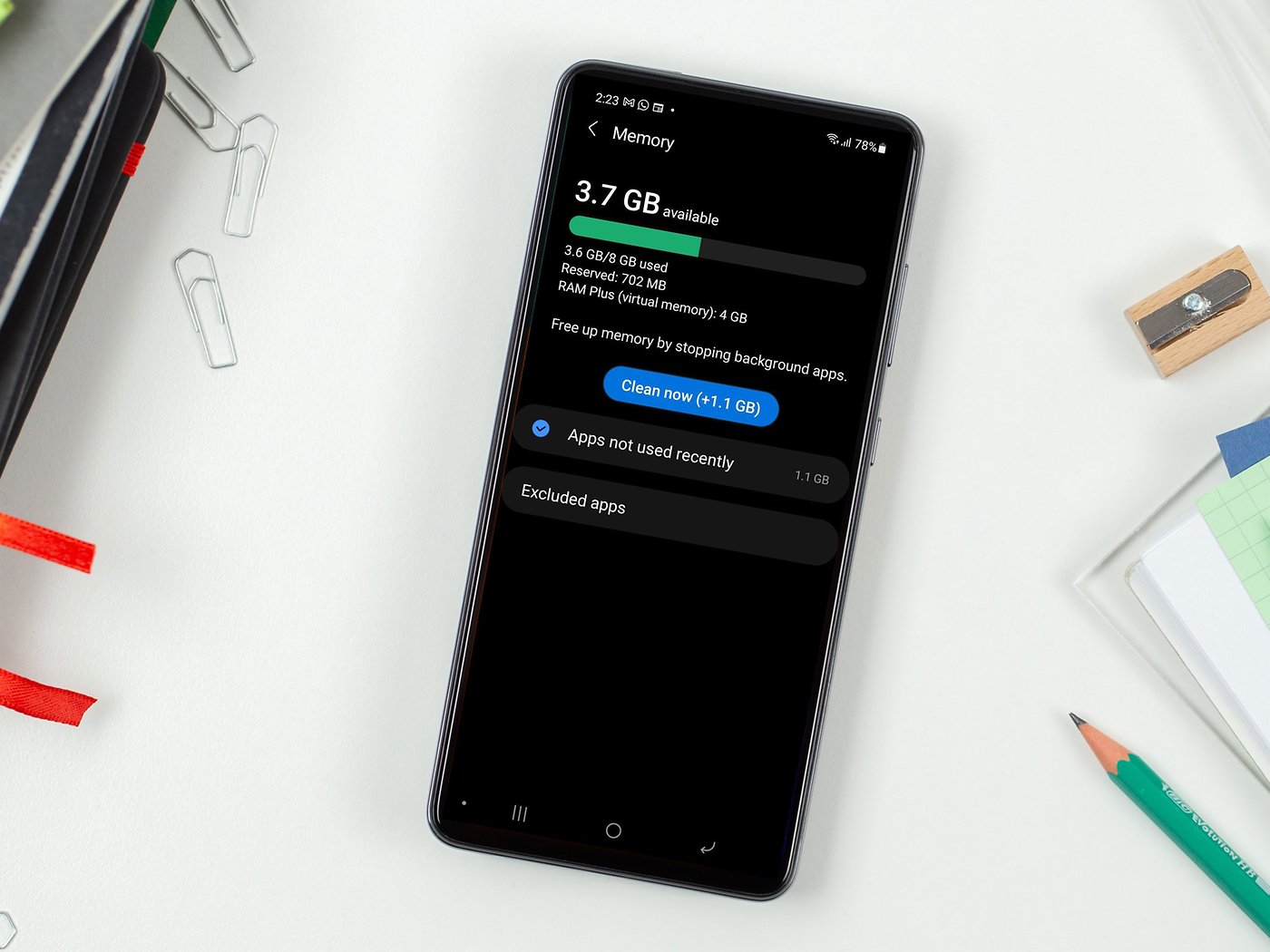Introduction
RAM (Random Access Memory) is an essential component of your computer that allows it to run programs and store temporary data. However, if you notice that your RAM usage is consistently high, it can slow down your system and affect overall performance. Fortunately, there are several steps you can take to decrease your RAM usage and optimize your computer’s performance.
In this article, we will explore various methods to reduce RAM usage and improve the speed and efficiency of your computer. From closing unnecessary applications to upgrading your RAM, we will cover a range of strategies that can help free up valuable memory resources and make your system run smoother.
Before we dive into the techniques, it’s important to understand that different computers have different amounts of RAM, and the optimal RAM usage will vary depending on your specific hardware and software requirements. However, the strategies we discuss can be applied to most systems to effectively decrease RAM usage.
By implementing these methods, you can ensure that your computer operates at its full potential, allowing you to multitask seamlessly, run resource-intensive applications, and enjoy a smoother computing experience overall. So, let’s explore the various ways you can reduce your RAM usage and optimize your computer’s performance.
Close Unnecessary Applications
One of the primary reasons for high RAM usage is the presence of multiple open applications running simultaneously. Each active application consumes a certain amount of memory, which can add up and put a strain on your system’s resources. To decrease RAM usage, it is crucial to close any unnecessary applications that are running in the background.
Start by taking a look at your taskbar or system tray and identifying applications that you are not actively using. These include programs that launch on startup or those that you may have opened but are no longer using. Right-click on their icons and choose the option to close or exit the application.
If you are unsure about which applications you can safely close, you can open the Task Manager (press Ctrl+Shift+Esc or right-click on the taskbar and select Task Manager) to get an overview of the processes and their corresponding memory usage. Sort the processes by memory usage and close the ones that are consuming a significant amount of RAM but are not essential for your current tasks.
It’s important to note that closing applications will free up RAM, but it may also result in the loss of unsaved work or terminate background processes that are necessary for certain applications to function properly. Make sure to save your work in progress before closing any applications, and be aware of any potential consequences.
In addition to closing unnecessary applications, it’s good practice to regularly restart your computer. This clears out the memory and ensures that any stray or unnecessary processes are terminated. Consider scheduling automatic restarts at regular intervals to keep your system running smoothly.
By closing unnecessary applications and regularly restarting your computer, you can effectively reduce RAM usage and improve the overall performance and responsiveness of your system.
Disable Startup Programs
When you start your computer, certain programs may automatically launch and run in the background. These startup programs consume valuable system resources, including RAM, even if you’re not actively using them. Disabling unnecessary startup programs can significantly decrease your RAM usage and improve your computer’s startup time.
To disable startup programs, you can use the Task Manager or the System Configuration utility in Windows. Here’s how:
- Task Manager: Press Ctrl+Shift+Esc to open the Task Manager. Click on the “Startup” tab to see a list of programs that launch at startup. Right-click on any program you want to disable and select “Disable”. Remember to only disable programs that you do not need running in the background.
- System Configuration Utility: Press the Windows key + R to open the Run dialog box. Type “msconfig” and press Enter. In the System Configuration window, go to the “Startup” tab. Uncheck the boxes next to the programs you want to disable, and click “OK”.
When disabling startup programs, it is important to exercise caution and only disable programs that you are familiar with and do not require to be running in the background. Some core system processes and essential applications should be left enabled to ensure the smooth functioning of your computer.
By disabling unnecessary startup programs, you can reduce the strain on your system’s resources, including RAM, and improve overall performance. Your computer will boot up faster, and you’ll have more available memory for the applications you actively use.
Manage Browser Extensions
Browser extensions can enhance your browsing experience by adding extra features and functionality to your favorite web browser. However, having too many extensions installed can increase RAM usage and slow down your browser performance. It’s important to manage your extensions and keep only the ones you truly need.
Start by reviewing the extensions you currently have installed in your browser. Open your browser’s settings or preferences and navigate to the extensions or add-ons section. Disable or uninstall any extensions that you no longer use or that are causing performance issues.
To determine which extensions are consuming the most resources, you can use your browser’s built-in task manager. In Google Chrome, for example, you can access the task manager by clicking on the three-dot menu in the top-right corner, selecting “More Tools”, and then choosing “Task Manager”. The task manager will display a list of tabs and extensions, along with their respective memory usage.
When managing browser extensions, keep the following tips in mind:
- Disable or remove unused extensions: If you have extensions installed that you no longer use or need, disable or remove them completely to free up resources.
- Limit the number of active extensions: The more extensions you have running, the more RAM they will consume. Only keep the extensions that provide essential functionality and remove the rest.
- Consider alternative lightweight extensions: Some extensions are known to be more resource-intensive than others. If a particular extension is causing high RAM usage, consider switching to a lightweight alternative that provides similar functionality.
By managing your browser extensions effectively, you can reduce RAM usage and improve the overall performance of your browser. This will result in faster page loading times and a smoother browsing experience.
Use a Lightweight Antivirus
An antivirus program is essential for protecting your computer from malware and other security threats. However, some antivirus software can be resource-intensive and consume a significant amount of RAM, impacting system performance. To decrease RAM usage, consider using a lightweight antivirus program that provides effective protection without putting a strain on your system resources.
When choosing an antivirus program, look for options that are specifically designed to have a minimal impact on system performance. These lightweight antivirus programs are optimized to run efficiently, utilizing fewer system resources, including RAM.
Some key factors to consider when selecting a lightweight antivirus program are:
- Resource Usage: Research the software and read user reviews to determine how well it performs in terms of RAM usage. Look for antivirus programs that have a reputation for being lightweight and efficient.
- Real-Time Protection: Ensure that the antivirus program still offers real-time protection against malware and other threats. It should be capable of scanning incoming files and blocking malicious activities without compromising system performance.
- Minimal Background Processes: A lightweight antivirus program should have a minimal number of background processes, reducing its impact on system resources.
- Frequent Updates: Choose an antivirus program that provides regular updates to keep up with the latest threats. This ensures that your system is protected without sacrificing performance.
By using a lightweight antivirus program, you can effectively reduce the strain on your RAM while still receiving the necessary protection for your computer. Regularly scan your computer for malware and schedule automatic scans at convenient times to maintain optimal security.
Remember, while using a lightweight antivirus program is beneficial for decreasing RAM usage, it’s essential to practice safe browsing habits and exercise caution when downloading files or visiting unknown websites. Combining a lightweight antivirus program with responsible online behavior will provide a strong defense against security threats while keeping your system running smoothly.
Clear Temporary Files
Over time, your computer accumulates temporary files that are created and stored by various programs and processes. These temporary files can take up a significant amount of space on your hard drive and contribute to high RAM usage. To free up both storage space and RAM, it’s important to regularly clear these temporary files.
Fortunately, most operating systems provide built-in tools to help you easily clear temporary files. Here’s how you can clear temporary files on Windows:
- Disk Cleanup: Open the Start menu and search for “Disk Cleanup”. Open the Disk Cleanup utility and select the drive where your operating system is installed (usually the C: drive). Click the “Clean up system files” button and select the types of temporary files you want to delete. Click “OK” and then “Delete Files” to remove the files.
- Temporary Files Folder: Press the Windows key + R to open the Run dialog box. Type “%temp%” and press Enter. This will open the Temporary Files folder. Select all the files and folders inside the folder and press the Delete key.
- Browser Cache: Open your web browser’s settings or preferences and locate the section for clearing cache or temporary files. Different browsers have different methods, so refer to the browser’s documentation or help menu for specific instructions.
By regularly clearing temporary files, you can free up valuable storage space and reduce the load on your RAM. This can lead to improved system performance, faster file access, and increased available memory for other programs and processes.
Additionally, you can automate the process of clearing temporary files by using third-party tools or scheduling regular disk cleanup tasks. This ensures that your system remains optimized without the need for manual intervention.
Remember to exercise caution when deleting temporary files and only remove files that you are certain are safe to delete. Some temporary files may be necessary for certain programs to function correctly, so double-check before deleting them.
By regularly clearing temporary files, you can keep your system clean, optimize your RAM usage, and maintain a smooth and efficient computing experience.
Limit Background Processes
Background processes are programs and services that run silently in the background while you use your computer. While some background processes are necessary for the proper functioning of your system or specific applications, having too many running simultaneously can increase RAM usage and impact performance. To decrease RAM usage, it’s important to limit unnecessary background processes.
Here are some steps you can take to limit background processes:
- Disable Startup Programs: As mentioned earlier, disable any unnecessary applications from launching at startup. This will help reduce the number of background processes running from the moment your computer boots up.
- Manage Services: Open the Task Manager and go to the “Services” tab. Here, you can view all the services running on your computer. Be cautious when modifying services, as some are critical for the proper functioning of your system. Only disable services that you are familiar with and are confident will not impact your computer’s performance or functionality.
- Adjust System Settings: Some applications and operating system features can be configured to consume fewer resources. For example, you can adjust the settings in resource-intensive applications to limit their background activity or lower their memory usage.
It’s important to strike a balance when limiting background processes. Some processes are necessary for the functioning of your system or specific applications, so exercise caution and only disable or modify processes that you are confident will not negatively impact your computer’s performance or functionality.
By limiting unnecessary background processes, you can reduce RAM usage and free up system resources. This allows your computer to allocate more memory to the programs and tasks you actively use, resulting in smoother performance and improved overall responsiveness.
Regularly monitor your system’s background processes and revisit the settings as needed. As your computing needs change or you install new applications, it’s important to reassess and adjust the background processes to ensure optimal RAM usage and system performance.
Adjust Visual Effects
Visual effects and animations can enhance the aesthetics of your computer’s operating system, but they also consume system resources, including RAM. Adjusting or disabling unnecessary visual effects can help decrease RAM usage and improve overall system performance.
To adjust visual effects on Windows:
- Open Performance Options: Right-click on the Start menu and select “System”. In the System window, click on “Advanced system settings” on the left-hand side. In the System Properties window, go to the “Advanced” tab and click on the “Settings” button under the “Performance” section.
- Customize Visual Effects: In the Performance Options window, you can choose between preset options such as “Adjust for best performance” or “Custom”. If you choose the “Custom” option, you can manually select or deselect specific visual effects to optimize RAM usage while still maintaining a visually appealing experience.
By adjusting visual effects, you can reduce the strain on your system’s resources, including RAM. Some visual effects, such as transparent windows or animated transitions, can be visually appealing but contribute to higher RAM usage. Disabling or minimizing these effects can free up memory for other tasks and applications.
While adjusting visual effects, it’s important to strike a balance between performance and visual appeal. You may choose to disable certain effects that you do not find essential or noticeable while keeping others that enhance your overall experience. Experiment with different settings until you find the optimal balance for your needs.
Keep in mind that the steps and options for adjusting visual effects may vary depending on your operating system version. Consult the documentation or help menu of your specific operating system for detailed instructions.
By customizing visual effects, you can reduce RAM usage and improve the responsiveness of your system. This allows you to allocate more resources to the tasks and applications you actively use, resulting in smoother performance and a more efficient computing experience.
Upgrade RAM
If you have tried various methods to decrease RAM usage but still find your computer struggling with resource-intensive tasks, it might be time to consider upgrading your RAM. Increasing the amount of RAM in your system can significantly improve performance, allowing for smoother multitasking and faster program execution.
To determine if upgrading your RAM is necessary, you can use the Task Manager or other system monitoring tools to monitor your memory usage over a period of time. If you frequently find your system utilizing a large portion of available memory, upgrading RAM can provide a noticeable improvement.
Upgrading RAM involves physically adding more memory modules to your computer’s motherboard. Here are some steps to follow:
- Determine Compatibility: Identify the type and maximum capacity of RAM your computer supports. This information can typically be found in your computer’s manual or by using system information tools.
- Purchase Compatible RAM Modules: Once you know the specifications of the RAM you need, purchase compatible memory modules from a reputable source. Consider factors such as capacity and speed based on your computing needs.
- Install the RAM Modules: Power off your computer and unplug it. Open the computer case and locate the RAM slots on the motherboard. Insert the new RAM modules correctly, ensuring they are securely seated in the slots. Close the computer case and reconnect the power.
- Verify Installation: Power on your computer and check the system information or Task Manager to confirm that the new RAM modules are recognized and properly installed.
Upgrading your RAM can significantly improve system performance, especially when dealing with memory-intensive tasks such as video editing, gaming, or running virtual machines. It allows your computer to handle more data simultaneously, reducing the strain on existing resources and minimizing the need for excessive paging or swapping to disk.
Remember to consider the limitations of your motherboard and operating system when upgrading RAM. Some systems may have a maximum supported RAM capacity or specific requirements for compatible modules.
Overall, upgrading your RAM is an effective way to decrease RAM usage and enhance your computer’s performance. It is a long-term solution that can provide noticeable improvements in multitasking, program responsiveness, and overall system efficiency.
Utilize Virtual Memory
Virtual memory, also known as paging file, is a feature of your operating system that uses a portion of your hard drive as an extension of your system’s RAM. By utilizing virtual memory, you can effectively increase the total amount of memory available to your computer, which can help decrease RAM usage and improve performance.
To optimize virtual memory settings on Windows:
- Open System Properties: Right-click on the Start menu and select “System”. In the System window, click on “Advanced system settings” on the left-hand side. In the System Properties window, go to the “Advanced” tab and click on the “Settings” button under the “Performance” section.
- Adjust Virtual Memory Settings: In the Performance Options window, go to the “Advanced” tab and click on the “Change” button under the “Virtual memory” section. Uncheck the option that says “Automatically manage paging file size for all drives”.
- Customize Paging File Size: Select the drive where your operating system is installed (usually the C: drive) and choose either the “System managed size” option or the “Custom size” option. If you choose the “Custom size” option, you can set an initial and maximum size for the paging file. The recommended size is typically 1.5 times the amount of RAM installed in your system, but you can adjust it based on your specific needs and available disk space.
- Apply Changes: Click “OK” to save the changes and then restart your computer for the new settings to take effect.
By properly utilizing virtual memory, you provide your computer with additional resources to handle memory-intensive tasks. However, it’s important to note that relying too heavily on virtual memory can potentially impact performance, as hard drives are slower than RAM. Therefore, it’s recommended to have an adequate amount of physical RAM installed in your system to minimize reliance on virtual memory.
In cases where you consistently experience high RAM usage despite optimizing other aspects, increasing the amount of virtual memory can help prevent system instability and crashes caused by running out of available memory.
Remember to regularly monitor your virtual memory usage and adjust the settings as needed. Adding more physical RAM is still the most effective solution for improving RAM usage. However, utilizing virtual memory can be a valuable temporary solution or supplement to enhance overall system performance.
Check for Memory Leaks
Memory leaks can occur when a program or process fails to release memory that it no longer needs, leading to a gradual increase in RAM usage over time. Identifying and fixing memory leaks can significantly decrease RAM usage and improve system stability and performance.
Here are some steps to check for memory leaks:
- Monitor RAM Usage: Use the Task Manager or other system monitoring tools to observe your computer’s RAM usage over an extended period of time. Keep an eye out for any consistent increase in memory usage, especially when you’re not actively running resource-intensive programs.
- Identify Problematic Processes: Sort the processes in the Task Manager by memory usage and identify any processes that consistently consume a large amount of memory. Investigate these processes further to determine if they could be causing memory leaks.
- Update Software: Ensure that all your software, including your operating system and applications, is up to date. Developers often release updates and patches to address memory leaks and other performance-related issues.
- Restart Problematic Applications: If you notice that a specific application is consuming an unusually large amount of memory, try closing and reopening it. This can help release any accumulated memory and alleviate the memory leak issue in some cases.
- Contact Software Support: If you believe that a specific program is causing a memory leak, reach out to the software’s support team or developer. Provide them with details about the issue, including the observed symptoms and any error messages. They may be able to guide you through troubleshooting steps or provide a fix.
It’s important to note that not all increases in RAM usage are due to memory leaks. Some programs may legitimately require more memory as they perform certain tasks, and the memory will be released when those tasks are completed. However, if you notice a consistent and substantial increase in RAM usage that doesn’t appear to be related to any specific activities, there may be a memory leak that requires investigation.
By checking for and addressing memory leaks, you can reduce unnecessary RAM usage, improve system stability, and enhance overall performance. Regular monitoring and proactive troubleshooting can help prevent memory leak issues, ensuring that your computer operates efficiently and reliably.
Conclusion
In conclusion, decreasing RAM usage can greatly enhance the performance and efficiency of your computer. By implementing the strategies outlined in this article, you can optimize your system and ensure that memory resources are efficiently utilized.
Managing RAM usage involves various steps, starting with closing unnecessary applications and disabling startup programs. By doing so, you can free up valuable memory and minimize strain on your system’s resources. Additionally, managing browser extensions, using a lightweight antivirus, and clearing temporary files are effective ways to reduce RAM usage and improve overall system performance.
Adjusting visual effects and limiting background processes are essential steps in optimizing RAM usage. By customizing visual effects and controlling background processes, you can strike a balance between aesthetics and performance.
Upgrading RAM is another effective solution when dealing with consistently high RAM usage. Increasing the amount of RAM installed in your system provides more memory for applications and processes to utilize, resulting in improved multitasking capabilities and faster program execution.
Furthermore, utilizing virtual memory and checking for memory leaks can also help decrease RAM usage. Utilizing virtual memory effectively expands the available memory capacity, while identifying and fixing memory leaks can prevent unnecessary memory consumption and improve system stability.
In conclusion, optimizing RAM usage is key to maintaining a smooth computing experience. By following these strategies and implementing the suggested steps, you can decrease RAM usage, maximize system performance, and enjoy a responsive and efficient computer.







